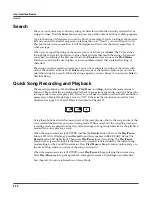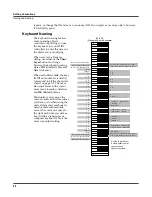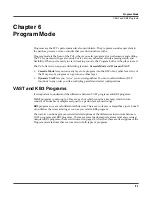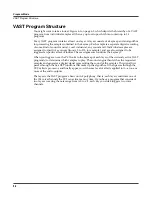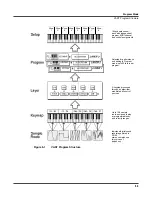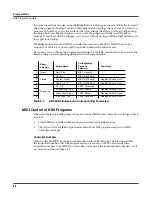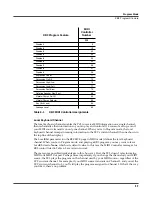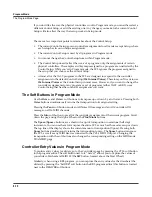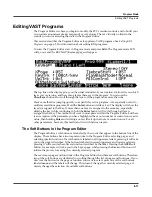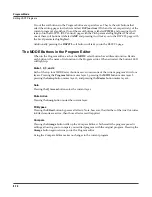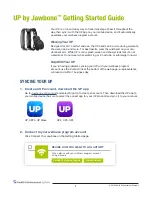
6-2
Program Mode
VAST Program Structure
VAST Program Structure
You might want to take a look at Figure 6-1 on page 6-3, which depicts the hierarchy of a VAST
program, from individual samples all the way up to setups, which can contain up to 16
programs.
Every VAST program contains at least one layer. A layer consists of a keymap and an algorithm
for processing the samples contained in the keymap. Each sample is a separate digital recording
of some kind of sound: musical, vocal, industrial, any sound at all. Individual samples are
assigned to specific key ranges (from A 2 to D 3, for example), and are also assigned to be
triggered at specific attack velocities. These assignments constitute the keymap.
When you trigger a note, the PC3 looks to the keymap of each layer of the currently active VAST
program(s) to determine which samples to play. The sound engine then fetches the requested
samples and generates a digital signal representing the sound of the samples. This signal first
passes through the five DSP functions that make up the algorithm. It then passes through the
PC3’s effects processor, and finally appears—with some level of effects applied to it—at one or
more of the audio outputs.
The layer is the VAST program’s basic unit of polyphony, that is, each layer constitutes one of
the 128 voice channels the PC3 can activate at any time. If you have a program that consists of
two layers covering the note range from A 0 to C 8, each key you strike triggers two voice
channels.
Summary of Contents for PC3
Page 24: ...1 6 Introduction Options ...
Page 50: ...4 4 The Operating Modes Using the Modes ...
Page 174: ...7 54 Setup Mode The Utility Soft Buttons ...
Page 178: ...8 4 Quick Access Mode Making Your Own QA Banks ...
Page 204: ...9 26 Effects Mono Algorithms ...
Page 266: ...A 2 MIDI Implementation Chart ...
Page 308: ...Index x ...



